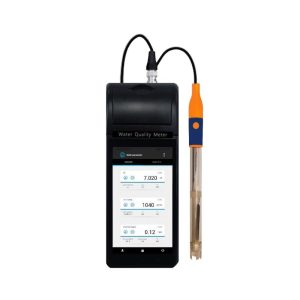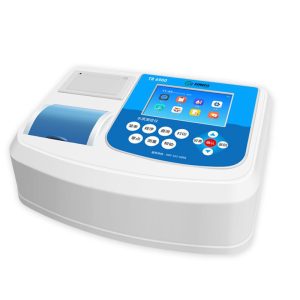Application of water quality detector in fish pond
Water quality testing is crucial for fish ponds. It can ensure that fish grow in a suitable water quality environment, prevent the occurrence of disease and death, while optimizing the management of aquaculture and improving the efficiency of aquaculture. Through water quality testing, key indicators such as pH, dissolved oxygen, temperature, and electrical conductivity can be monitored in the water body, as well as potential pollutants and pathogens. In this way, water quality problems can be detected in time, and necessary regulatory measures can be taken to ensure the healthy growth of fish and ensure the sustainable development of fish ponds.

Index of detection
In the detection of fish pond water quality, it is generally necessary to detect seven indicators, including dissolved oxygen, pH value, temperature, ammonia nitrogen, nitrite, nitrate, suspended matter. These common indicators and corresponding requirements are as follows:
Dissolved oxygen (DO) : Dissolved oxygen is one of the important indicators in fish pond water. The water quality detector can be used to measure the dissolved oxygen content in water to evaluate the oxygen adequacy in fish pond water. The appropriate dissolved oxygen concentration ranges from 5 to 8 mg/L to ensure normal respiration and survival of fish.
pH value: Water quality detector can be used to measure the pH value of fish pond water. Fish are sensitive to changes in water pH, and too high or low pH may have negative effects on the growth and health of fish. The appropriate pH range is 6.5-8.5 to maintain the physiological balance of fish.
Temperature: Fish are also sensitive to changes in water temperature, and too high or low temperature may have a negative impact on their growth and physiological functions. The appropriate water temperature depends on the species of fish, usually between 18 and 30 degrees Celsius, but different species may have different requirements.
Ammonia nitrogen: The concentration of ammonia nitrogen should be less than 0.02 mg/L, and high concentrations of ammonia nitrogen are toxic to fish.
Application of water quality detector in fish pond
Nitrite: Nitrite concentration should be less than 0.2 mg/L, high concentrations of nitrite can cause harm to fish.
Nitrate: Nitrate concentration should be less than 10 mg/L, too high nitrate content may cause health problems in fish.
Suspended solids: Suspended solids concentration should be controlled within an appropriate range, usually requiring good water transparency to ensure visual observation and feeding of fish.
Eligibility criteria for these indicators can vary according to the species, growth stage and feeding conditions of the specific fish species. In general, qualified fish pond water quality should meet the requirements of the above indicators and match the ecological environment of specific fish. In addition, the following points should be noted:
Regular water quality testing is recommended, especially during seasonal changes and critical stages of the fish feeding cycle.
Ensure that the fish pond water has good circulation and ventilation to avoid the accumulation of harmful substances in the water.
The amount of bait and the density of fish should be reasonably controlled to avoid water quality problems caused by over-feeding and over-intensive cultivation.
Application of water quality detector in fish pond
According to the water quality test results, necessary water quality regulation measures, such as aeration device, filtration system, water aeration, etc., should be taken to improve water quality.
Ensuring qualified water quality in fish ponds is the key to fish health and growth. If the water quality index exceeds the reasonable range, it may have adverse effects on the survival and health of fish. Therefore, regular testing of water quality and timely taking corresponding adjustment and improvement measures according to the test results are important steps to maintain good water quality in fish ponds. By using water quality detectors for regular water quality monitoring and parameter measurement, fishpond managers can timely understand the quality of the fishpond water body and take necessary measures to adjust and improve the water quality and ensure the health and growth of fish.

